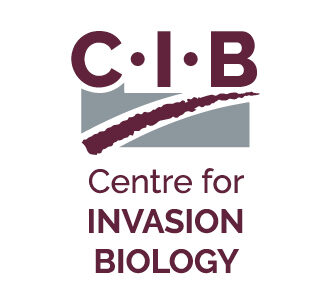Post-docs
PhD
Masters
Post-docs

Dr Lehlohonolo Donald Adams
Understanding invasion potential and risk of fleshy-fruited invasive shrubs and trees in South Africa.
Dr Luke Potgieter
Using citizen-science to understand drivers of urban biological invasions
PhD

Cathleen Deelie
Marine invasions in Namibia: past, present and future.
Daniel van Blerk
Marine invasions in the Knysna estuary.
Loyd Vukeya
Resilience of southern African grassland biome to biological invasions.
Mr Bheka Nxele
Validating the Influence of Chemical Application for Invasive Alien Plant Control on Biodiversity Recruitment and Ecosystem ServicesMr Siphosenkosi Mbonani
Genomics and defence mechanisms of Opuntia engelmannii Salm-Dyck (Cactaceae: Opuntioideae) lineages in Africa, as the basis for host-selection by potential biocontrol agents.Ms Alekzandra Szewczuk
Detection and mapping of three prevalent invasive alien plants (IAP) using freely available remote sensing imagery
Ms Clara Steyn
Long term change in kelp forest ecosystems on the west and south-west coasts of South Africa
Sarah Ackland
Citizen science as a tool for monitoring threats in coastal marine areas
Tania Pogue
Quantifying sources of variation in the thermal performance curve framework: Trait variation, methodological artefacts, and stress recovery
Masters

Jessica Howard
Functional and evolutionary determinants of recruitment differentiation between Fynbos Protea individuals, population, and species.
Kemoratile Maseko
Of niches and genes: Understanding evolutionary relationships and niche dynamics in invasive and indigenous rodents from Southern Africa under climate change scenarios.
Megan van den Berg
The invasive alien tree fern Sphaeropteris cooperi in South Africa and on Reunion Island
Zeane Nel
Distribution, seasonality and impacts of the alien bryozoan Amathia verticillata.
